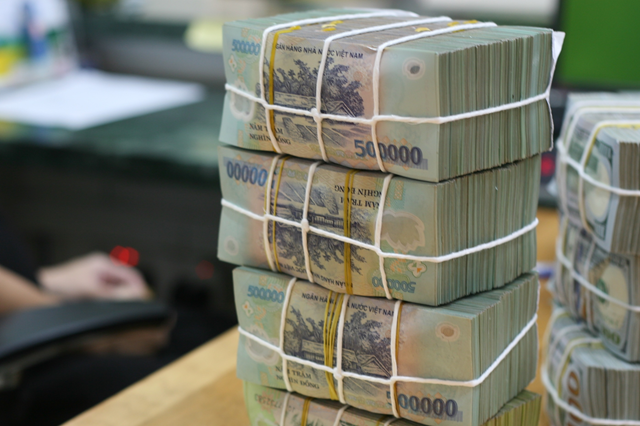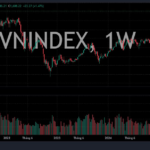
On August 12, 2025, the State Bank of Vietnam (SBV) issued Circular No. 23/2025/TT-NHNN, amending and supplementing a number of articles of Circular No. 30/2019/TT-NHNN on mandatory reserves. The Circular consists of 12 articles and takes effect from October 1, 2025.
Accordingly, two groups of credit institutions are subject to a 50% reduction in the mandatory reserve ratio:
- Credit institutions providing support in accordance with Clause 39, Article 4 of the Law on Credit Institutions No. 32/2024/QH15, will be reduced according to the approved plan for the recovery of the specially controlled credit institution.
- Credit institutions that are mandated to take over the specially controlled commercial bank will be reduced according to the approved takeover plan.
The reduction applies to all types of deposits subject to mandatory reserves.
Mandatory reserves refer to the amount of money that credit institutions are required to maintain with the SBV to implement the country’s monetary policy. According to regulations, from October 2025, commercial banks must maintain mandatory reserves equivalent to 3% of non-term deposits and deposits with a term of less than 12 months, and 1% for deposits with a term of 12 months or more. In addition, banks are required to maintain a minimum reserve of 1-8% for foreign currency deposits.
It is known that four banks officially receiving the mandatory transfer of weak banks include: Vietcombank taking over CBBank, renamed VCBNeo digital bank; HDBank taking over DongABank and transforming it into Vikki Bank; MB taking over Oceanbank, renamed MBV; and GPBank being transferred to VPBank.
Boosting Capital Supply to the Economy
Prof. Dr. Nguyen Huu Huan, Senior Lecturer, University of Economics Ho Chi Minh City, opined that when the mandatory reserve ratio is reduced, banks can supply a larger amount of capital to the market. For instance, if the reserve ratio is lowered from 3% to 1.5%, it means that for every 100 VND mobilized, the bank only needs to retain 1.5 VND instead of 3 VND as before. This change allows them to lend up to 98.5 VND, higher than the previous 97 VND. Although the difference of 1.5 VND is not significant, when multiplied by the huge scale of large banks (especially the top four banks, which account for 25% of the industry’s total outstanding loans), this amount becomes substantial.
This not only helps banks optimize the use of mobilized capital but also has a greater impact on the entire economy. When banks are able to lend more, the amount of base money in the economy increases. Through the money multiplier effect, it will amplify the money creation capacity, increase the amount of money in circulation, and boost economic activities.
Reducing Capital Costs and Enhancing Liquidity
According to Mr. Nguyen Quang Huy, CEO of the Faculty of Finance and Banking, Nguyen Trai University, the SBV’s decision to reduce the mandatory reserve ratio by 50% for credit institutions involved in restructuring is a strategic liquidity boost for the four banks receiving the transfer. This policy has a multi-dimensional impact, reducing capital costs while directly increasing liquidity and promoting credit growth.
The core mechanism is to release the large amount of capital previously “frozen” at the SBV with a low interest rate (0.5%/year) so that banks can invest in higher-yielding assets. With their current deposit scale, the four banks involved (Vietcombank, MB, VPBank, and HDBank) can release tens of thousands of billion VND. This capital immediately strengthens liquidity reserves, expands lending capacity, reduces funding pressure, and improves net interest margin (NIM).
The specific impact on banks includes Vietcombank, which will enjoy the absolute largest benefit due to its superior deposit scale and CASA ratio, creating a solid capital buffer to support CB Bank and optimize its asset portfolio. Vietcombank can also flexibly allocate this capital to government bonds or high-quality corporate loans, thereby increasing profits while ensuring capital adequacy standards.
Meanwhile, MB can leverage its extensive ecosystem and rapid capital turnover to strengthen OceanBank and promote lending in the SME and retail segments.
For VPBank, the released capital will boost growth in high-yield segments such as retail and consumer lending, reducing capital costs when integrating GPBank.
HDBank, with its diverse customer base, can quickly absorb new capital, enabling the bank to handle DongA Bank while maintaining its growth momentum without affecting profits.
At the macro level, this is a selective liquidity easing measure, focusing on the pillar banks undertaking the restructuring task, thereby supporting the system without causing inflationary risks. In the long run, this policy helps banks strengthen their intrinsic capital, reduce reliance on external funding, and enhance sustainable competitiveness.
By Cat Lam
– 6:14 PM, August 14, 2025
The VN-Index Rides High: What Investors Need to Know to Avoid Getting Caught in the Tide
“One of the key warning signs is the Relative Strength Index (RSI), when the RSI of the VN-Index basket exceeds the 30-40% threshold, the market has seen significant corrective waves, as witnessed in 2020, 2022, and most recently in 2023 and 2024,” the expert pointed out.
The Art of Monetary Policy: Navigating Interest Rates and Exchange Rates with Agile Governance.
The government has requested that the State Bank of Vietnam proactively undertake research, evaluation, and forecasting within the scope of its functions, tasks, and authority. This includes developing monetary policy scenarios and orientations from now until the end of 2025 and for 2026. A report is to be submitted to the Government’s Standing Committee for consideration and feedback no later than August 20, 2025.
“Pursuing Excellence: Achieving Socio-Economic Goals for 2025”
The Prime Minister has urged all ministries, sectors, and localities to rally and address challenges, limitations, and shortcomings. By seizing every opportunity, we aim to achieve the economic and social development goals set for 2025, especially targeting a GDP growth rate of 8.3 – 8.5%, keeping CPI increase below 4.5%, and maintaining macroeconomic stability. These efforts will lay the foundation for even greater success in 2026, with aspirations to reach a growth rate of 10% and beyond.










































